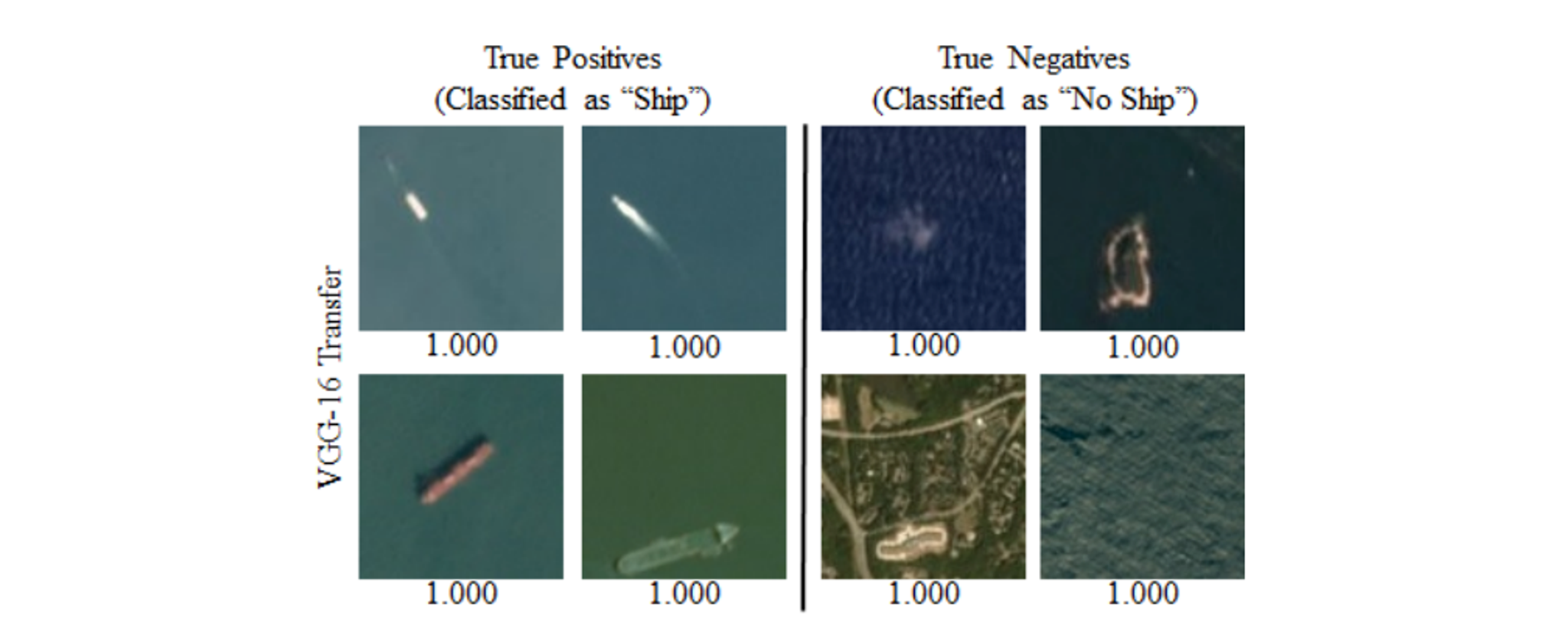Convolutional Neural Networks used to Detect and Classify Ships in Dove Imagery
With daily imagery over ports and coastlines, one of the most useful potential applications of Planet’s Dove imagery is the detection and classification of maritime vessels. Ship tracking has a vital role in security, but the enormous number of ships at sea at any given time limits the effectiveness of classical, human-powered analyses. Using machine learning, it may ultimately be possible to detect millions of vessels, in near real time. In her Master’s Thesis at the Naval Postgraduate School, Katherine Rice used transfer learning of a previously trained Convolutional Neural Network (CNN) to first detect, and then classify different types of maritime vessels. Trained with 1,800 hand selected chips, Rice demonstrated a recall of 1.00 and precision of 0.98 on sets of 200 validation and test images—a nearly flawless ship classifier. Rice was also able to glean limited information about the type of vessel, classifying barges, fast ships (i.e. with a wake) and merchant vessels with an average recall of 0.83 and precision of 0.85. The results suggest that detection and classification of ships over large scales and dense time series is within the grasp of open source CNNs provided they are re-trained with an expert human classifier. Limits were observed, consistent with other ship tracking efforts, including white caps, image artifacts and islands being mislabeled as ships in some analyses. Read Rice's thesis in full at the Naval Postgraduate School. [caption id="attachment_143270" align="aligncenter" width="1008"]


Ready to Get Started
Connect with a member of our Sales team. We'll help you find the right products and pricing for your needs.


